History
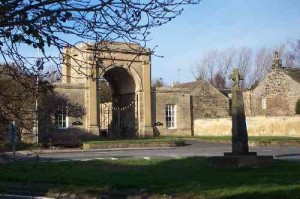
Taken from “Follifoot our Heritage” researched and written by Follifoot Women’s Institute. All copies of the book were sold at the time of printing.
The earliest evidence of human occupation in the neighbourhood of the village is the prehistoric circular barrow found at Alexander Hill on the western boundary of the parish. The mound was 150 feet in circumference and was composed of earth and stones. This was “excavated” in 1850 mainly for the sale of loose stones which were then broken up and used to repair the highway. A local smith obtained several weapons, articles of bronze and fragments of pottery and bone.
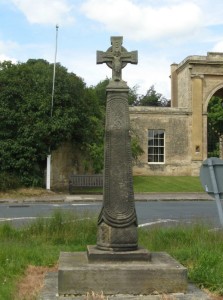
By 1903 all this had been dispersed and nothing was known of the finds. Some Saxon remains have been unearthed in Rudding Park, including a gold collar ornament. Some remains, including bones of horses were found at the top of the Garth field and it was thought these might have had a connction with a journey made through the district by Oliver Cromwell.
The village is not listed in the Domesday Book and the earliest documentary evidence of the village occurs in the 12th century in land and tax documents. In 1186 it is recorded that Nicolas, son of Hugh, son of Hippolitus de Braam gave one “toft” – a field where a house or building stood, in Folyfait, to Gilbert, son of Thomas Oysel de Plumpton. Gilbert then donated this property to Fountains Abbey.
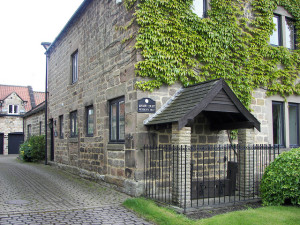
In 1203, Henriicus, Parson of Knaresborough, was fined in a York court for some illegality concerning lands at Folifeit. When Kirkby’s Inquest was made in 1284, it was noted that a fourth part of Follifoot was held by William de Hartlington, owner of the Manor of Braham, and in 1364, Edward III appointed Thomas de Spaigne custodian of “one Messuage” – a dwelling house – and forty acres of land in Follifoot. Indeed by the time of Richard III the village was large enough to be marked on a 1378 map and for the villagers to be dunned for a substantial sum in poll taxes.
The village continues to be mentioned in similar documents up to more recent times. The spelling of the village name in such papers appears to have been entirely at the whim of the writer. The following variations have been seen in different documents, in the 16th century one paper alone has four variations on the same page!
| Pholifet | 12th century |
| Folyfait, Folifeit | 13th century |
| Folyfat, Folyfoyt, Folifaith, Follyfet, Follyfeate | 16th century |
| Folifaite, follfaite, follyfaite | 17th century |
| Follyfett, foleyfoot | 18th century |
Further evidence of medieval occupancy of the village was revealed in 1964 by school children who found a pottery kiln on the site of some new houses. The site, known as Low Garth, is situated at the side of the Horse Pond Beck at the bottom of the village. The kiln, which had partly been demolished by the bulldozer, was circular, with five to six flues. It had an internal diameter of six feet, with a two feet high unmortared grit wall surround. The pottery was sited on grit stone slabs above a clay floor. The pots were undecorated, with partial dark brown glaze and were found to be of medieval origin.
Amoungst the finds were a number of jugs and bowls, but in the main the finds were of large pitchers with broad handles and bung holes, some with bungs. It is thought possible that the kiln was sited where even earlier kilns had once stood, but no firm evidence has been found.
In the early part of the reign of James I, Richard Paver of Braham Hall obtained the lease of the Follifoot lands from the King for £140.3.4d. These were the lands which had belonged to the Priory of Newburgh before the Dissolution of the Monastries. The lands were held of the Manor of East Greenwich in free socage for the annual rent of £4.7.6d. for the Follifoot lands and £2.15.8d. for the Aketon lands.
Below are the names of the tenants, and the annual rents paid by them to Richard Paver at that time.
|
FOLLIFOOT
|
AKETON | |||||
|
John Lutye
|
22s. | John Galias | 18s. | Michael Bycardicke |
29s.4d.
|
Aketon Hall |
|
Robert Swayle
|
7s. | John Scoles | 3s.4d. | Thomas Middleton |
16d.
|
Cellerer Acre |
|
John Allyn
|
2s.8d. | Richard Marshall | 2s. | Thomas Baylton |
5s.
|
|
|
Richard Curtys
|
2s.4d. | John Dyghton |
10s.
|
|||
|
Laurance Danby
|
30s. | Jacob Tenaunte |
5s.
|
The establishment of Rudding Park is of relatively recent date, 19th century, and until this time Follifoot had no Manor House as such. The Manorial rights to the village were held by the lords of the Manor of Spofforth, namely the Percys, Earls of Northumberland and the Egremonts, Earls of Sussex. During the 18th century, at the time of the Enclosure Acts, Follifoot was the scene of an attempted “land grab”. The establishment of Manorial rights was particularly important at this time, as the soil royalties of the moor and common lands were the prerogative of the Lord of the Manor.
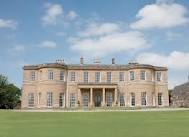
Daniel Lascelles, who had just purchased the Manor of Plumpton from Robert Plumpton’s estate for £28,000, had also obtained land and cottages in Follifoot from a Dr. Hodgson for £1,000. He then continued the practice, illegally adopted by the doctor, of holding a “Manor court”. In order to inveigle the village freeholders to attend this spurious court, it was held, not as usual in a “place of ancient use”, but in the local alehouse, where lavish hospitality was dispensed. One of the oldest freeholders of Follifoot at this time, a gentleman called Mark Park, when questioned as to why he and others attended this irregularly constituted court, said, “I cannot tell why, but that we are always handsomely treated and it is the best court I ever was at”.
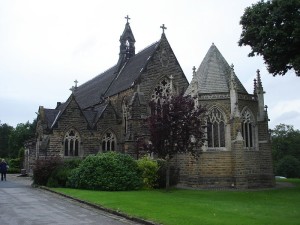
The area of the land in dispute was estimated at 1,100 acres, and eventually 1/16th of this was offered to Mr. Lascelles in compensation for waiving his claim to the Manor. Documents produced by George, Lord Egremont to establish that Follifoot was part of his Manor of Spofforth included court rolls from the times of Edward IV, Henry VI, Henry VII, Henry VIII, Elizabeth I, James I, Charles I and Charles II. The reports of the village constables to the Manorial court at Spofforth were also produced. The Book of the Survey of the Manor of Spofforth compiled in 1577 also listed Follifoot and Aketon in the Manor of Spofforth, with the primary landowners listed as William Plumpton, the Priory of Newburgh (who has held land in Follifoot at least since 1315), and Perivale Tombington. Alice Jonson was named as a tenant holder.
It is interesting to note that the executors of the will of Thomas Richardson of Knaresborough, purchased a pice of land in Follifoot in 1785, the income from which was used to supplement the income of the Petty School established by Richardson on Pump Hill, Knaresborough. This transaction is recorded on a stone slab to be seen at the present time over the doorway of the old school, now a private house.
Images: follifoot.org.uk, ruddingpark.co.uk, flickr.com, Wikimedia Commons and britishlistedbuildings.co.uk